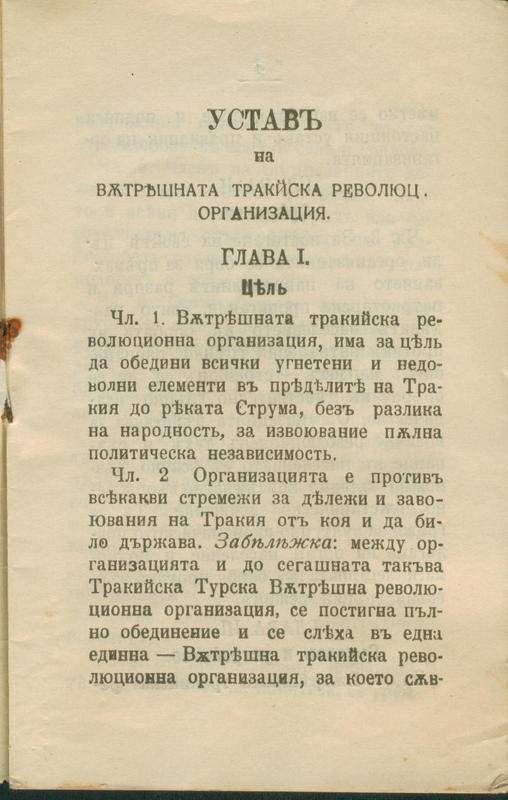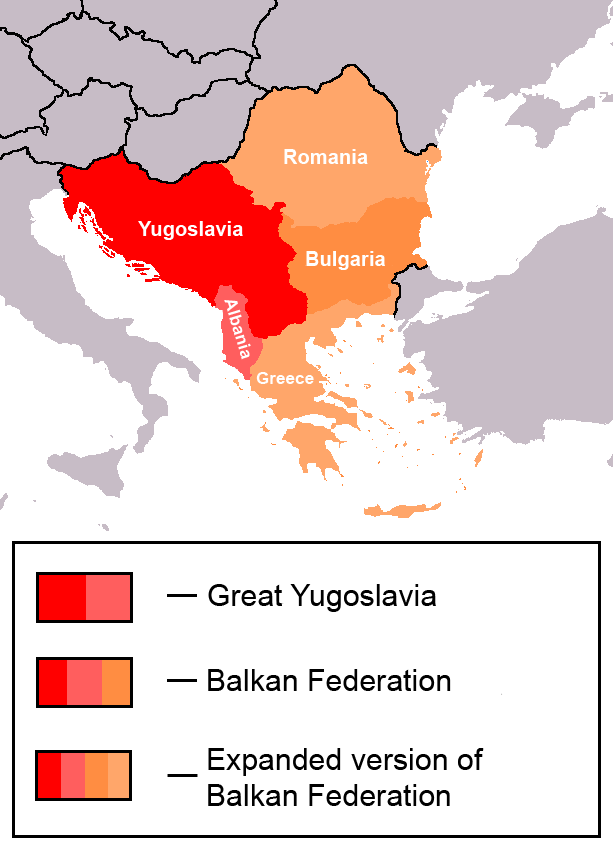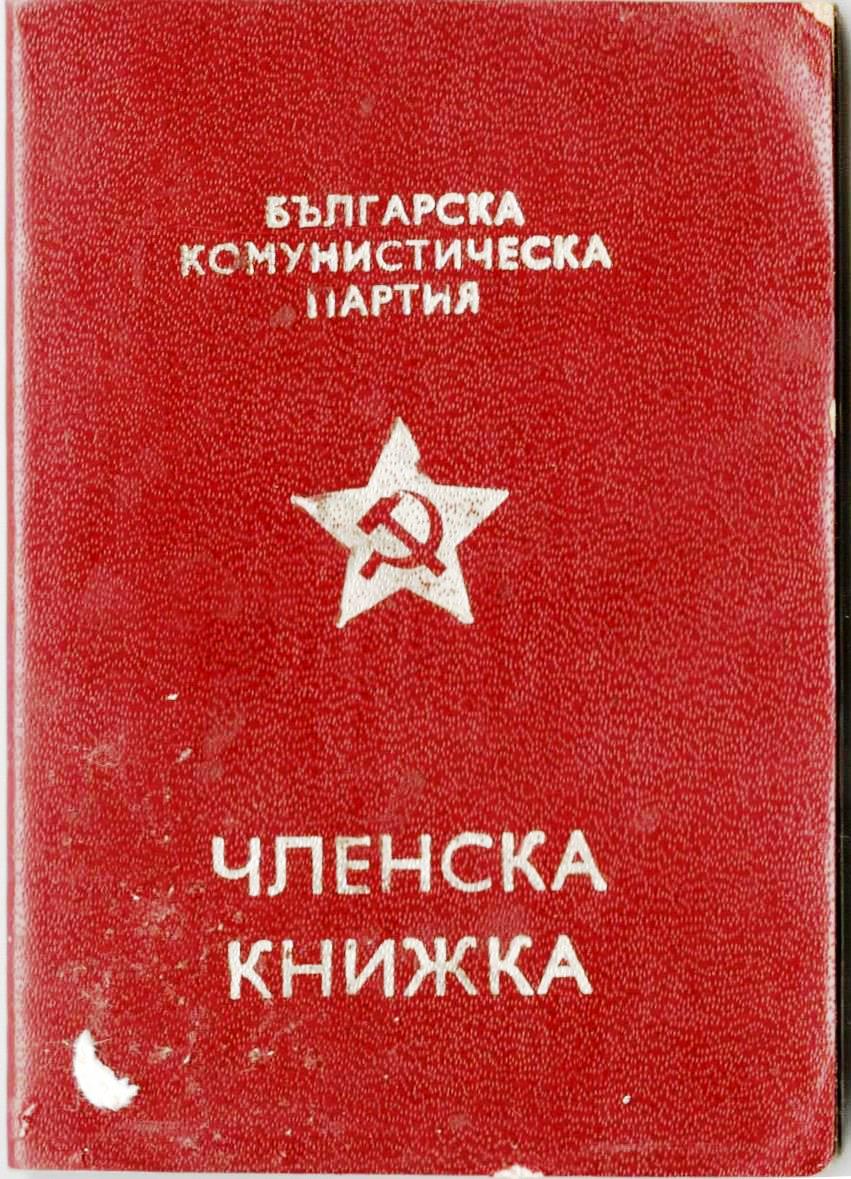|
Thracian Bulgarians
Thracians or Thracian Bulgarians (Bulgarian: Тракийски българи or Тракийци) are a regional, ethnographic group of ethnic Bulgarians, inhabiting or native to Thrace. Today, the larger part of this population is concentrated in Northern Thrace, but much is spread across the whole of Bulgaria and the diaspora. Until the beginning of the twentieth century the Thracian Bulgarians were scattered in the whole of Thrace, then part of the Ottoman Empire. After the persecutions during the Preobrazhenie Uprising and the ethnic cleansing, caused to the Bulgarian population in Eastern Thrace after the Second Balkan War, these people were expelled from the area. After World War I, Bulgaria was required to cede Western Thrace to Greece. A whole population of Bulgarians in Western Thrace was expelled into Bulgaria-controlled Northern Thrace. This was followed by a further population exchange between Bulgaria and Greece (under the Treaty of Neuilly-sur-Seine), which radi ... [...More Info...] [...Related Items...] OR: [Wikipedia] [Google] [Baidu] |
Thrace
Thrace (; el, Θράκη, Thráki; bg, Тракия, Trakiya; tr, Trakya) or Thrake is a geographical and historical region in Southeast Europe, now split among Bulgaria, Greece, and Turkey, which is bounded by the Balkan Mountains to the north, the Aegean Sea to the south, and the Black Sea to the east. It comprises southeastern Bulgaria (Northern Thrace), northeastern Greece (Western Thrace), and the European part of Turkey ( East Thrace). The region's boundaries are based on that of the Roman Province of Thrace; the lands inhabited by the ancient Thracians extended in the north to modern-day Northern Bulgaria and Romania and to the west into the region of Macedonia. Etymology The word ''Thrace'' was first used by the Greeks when referring to the Thracian tribes, from ancient Greek Thrake (Θρᾴκη), descending from ''Thrāix'' (Θρᾷξ). It referred originally to the Thracians, an ancient people inhabiting Southeast Europe. The name ''Europe'' first referred to ... [...More Info...] [...Related Items...] OR: [Wikipedia] [Google] [Baidu] |
World War I
World War I (28 July 1914 11 November 1918), often abbreviated as WWI, was one of the deadliest global conflicts in history. Belligerents included much of Europe, the Russian Empire, the United States, and the Ottoman Empire, with fighting occurring throughout Europe, the Middle East, Africa, the Pacific, and parts of Asia. An estimated 9 million soldiers were killed in combat, plus another 23 million wounded, while 5 million civilians died as a result of military action, hunger, and disease. Millions more died in genocides within the Ottoman Empire and in the 1918 influenza pandemic, which was exacerbated by the movement of combatants during the war. Prior to 1914, the European great powers were divided between the Triple Entente (comprising France, Russia, and Britain) and the Triple Alliance (containing Germany, Austria-Hungary, and Italy). Tensions in the Balkans came to a head on 28 June 1914, following the assassination of Archduke Franz Ferdin ... [...More Info...] [...Related Items...] OR: [Wikipedia] [Google] [Baidu] |
Demographics Of The Ottoman Empire
This article is about the demographics of the Ottoman Empire, including population density, ethnicity, education level, religious affiliations and other aspects of the population. Lucy Mary Jane Garnett Lucy Mary Jane Garnett (1849–1934) was a folklorist and traveller. She is best known for her work in Turkey. She also translated Greek folk poetry. See also *''Turkey of the Ottomans ''Turkey of the Ottomans'' is an anthropological boo ... stated in the 1904 book ''Turkish Life in Town and Country'', published in 1904, that "No country in the world, perhaps, contains a population so heterogeneous as that of Turkey."Lucy Garnett, Garnett, Lucy Mary Jane. ''Turkish Life in Town and Country''. G.P. Putnam's Sons, 1904. p1 Census Demographic data for most of the history of the Ottoman Empire is not quite precise. For most of the five centuries of its existence, the empire did not have easily computable valid data except figures for the number of employed citizens. Unti ... [...More Info...] [...Related Items...] OR: [Wikipedia] [Google] [Baidu] |
Thracian Bulgarians
Thracians or Thracian Bulgarians (Bulgarian: Тракийски българи or Тракийци) are a regional, ethnographic group of ethnic Bulgarians, inhabiting or native to Thrace. Today, the larger part of this population is concentrated in Northern Thrace, but much is spread across the whole of Bulgaria and the diaspora. Until the beginning of the twentieth century the Thracian Bulgarians were scattered in the whole of Thrace, then part of the Ottoman Empire. After the persecutions during the Preobrazhenie Uprising and the ethnic cleansing, caused to the Bulgarian population in Eastern Thrace after the Second Balkan War, these people were expelled from the area. After World War I, Bulgaria was required to cede Western Thrace to Greece. A whole population of Bulgarians in Western Thrace was expelled into Bulgaria-controlled Northern Thrace. This was followed by a further population exchange between Bulgaria and Greece (under the Treaty of Neuilly-sur-Seine), which radi ... [...More Info...] [...Related Items...] OR: [Wikipedia] [Google] [Baidu] |
Internal Thracian Revolutionary Organisation
The Internal Thracian Revolutionary Organisation (Bulgarian: Вътрешна тракийска революционна организация, ''Vatreshna trakiyska revolutsionna organizatsiya'', ITRO) was a Bulgarian revolutionary organisation active in Western Thrace and southern Bulgaria between 1920 and 1934. Dimitar Bechev, Scarecrow Press, 2009, , p. 100.  The reason for the establishment of ITRO was the deplorable situation of the
The reason for the establishment of ITRO was the deplorable situation of the
|
The Destruction Of Thracian Bulgarians In 1913
''The'' () is a grammatical article in English, denoting persons or things already mentioned, under discussion, implied or otherwise presumed familiar to listeners, readers, or speakers. It is the definite article in English. ''The'' is the most frequently used word in the English language; studies and analyses of texts have found it to account for seven percent of all printed English-language words. It is derived from gendered articles in Old English which combined in Middle English and now has a single form used with pronouns of any gender. The word can be used with both singular and plural nouns, and with a noun that starts with any letter. This is different from many other languages, which have different forms of the definite article for different genders or numbers. Pronunciation In most dialects, "the" is pronounced as (with the voiced dental fricative followed by a schwa) when followed by a consonant sound, and as (homophone of pronoun ''thee'') when followed by a ... [...More Info...] [...Related Items...] OR: [Wikipedia] [Google] [Baidu] |
Accession Of Turkey To The European Union
Turkey is negotiating its accession to the European Union (EU) as a member state, following its application to become a full member of the European Economic Community (EEC), the predecessor of the EU, on 14 April 1987. After the ten founding members in 1949, Turkey became one of the first new members ( the 13th member) of the Council of Europe in 1950. The country became an associate member of the European Economic Community (EEC) in 1963 and was an associate member of the Western European Union from 1992 to its end in 2011. Turkey signed a Customs Union agreement with the EU in 1995 and was officially recognised as a candidate for full membership on 12 December 1999, at the Helsinki summit of the European Council. Negotiations for full membership were started on 3 October 2005. Progress was slow: out of the 35 chapters necessary to complete the accession process, only 16 had been opened and one had been closed by May 2016. The early 2016 refugee deal between Turkey and the ... [...More Info...] [...Related Items...] OR: [Wikipedia] [Google] [Baidu] |
Drama, Greece
Drama ( el, Δράμα ) is a city and municipality in Macedonia, northeastern Greece. Drama is the capital of the regional unit of Drama which is part of the East Macedonia and Thrace region. The city (pop. 55.593 2021 censuis the economic center of the municipality (pop. 58,944), which in turn comprises 60 percent of the regional unit's population. The next largest communities in the municipality are Choristi (pop. 2,725), Χiropótamos (2,554), Kallífytos (1,282), Kalós Agrós (1,178), and Koudoúnia (996). Built at the foot of mount Falakro, in a verdant area with abundant water sources, Drama has been an integral part of the Hellenic world since the classical era; under the Byzantine Empire, Drama was a fortified city with a castle and rose to great prosperity under the Komnenoi as a commercial and military junction. During the Ottoman era, tobacco production and trade, the operation of the railway (1895) and improvement of the road network towards the port of Kavala, ... [...More Info...] [...Related Items...] OR: [Wikipedia] [Google] [Baidu] |
Serres
Sérres ( el, Σέρρες ) is a city in Macedonia, Greece, capital of the Serres regional unit and second largest city in the region of Central Macedonia, after Thessaloniki. Serres is one of the administrative and economic centers of Northern Greece. The city is situated in a fertile plain at an elevation of about , some northeast of the Strymon river and north-east of Thessaloniki, respectively. Serres' official municipal population was 76,817 in 2011 with the total number of people living in the city and its immediate surroundings estimated at around 100,000. The city is home to the Department of Physical Education and Sport Science of the Aristotle University of Thessaloniki ( el, Τ.Ε.Φ.Α.Α. Σερρών) and the Serres Campus of the International Hellenic University (former " Technological Educational Institute of Central Macedonia"), composed of the Faculty of Engineering, the Faculty of Economics and Management, and the Department of Interior Architecture and ... [...More Info...] [...Related Items...] OR: [Wikipedia] [Google] [Baidu] |
Balkan Communist Federation
The Balkan Federation project was a left-wing political movement to create a country in the Balkans by combining Yugoslavia, Albania, Greece, Bulgaria, Romania and Turkey. The concept of a Balkan federation emerged in the late 19th century from among left political forces in the region. The central aim was to establish a new political unity: a common federal republic unifying the Balkan Peninsula on the basis of Internationalism (politics), internationalism, socialism, social solidarity, and economic equality. The underlying vision was that despite differences among the Balkan peoples the historical need for emancipation was a common basis for unification. This political concept went through three phases in its development. In the first phase the idea was articulated as a response to the collapse of the Ottoman Empire at the beginning of the 20th century. In the second phase, mostly through the interwar period (1919–1936), the idea of the Balkan federation was taken up by the B ... [...More Info...] [...Related Items...] OR: [Wikipedia] [Google] [Baidu] |
Comintern
The Communist International (Comintern), also known as the Third International, was a Soviet Union, Soviet-controlled international organization founded in 1919 that advocated world communism. The Comintern resolved at its Second Congress to "struggle by all available means, including armed force, for the overthrow of the international bourgeoisie and the creation of an international Soviet republic (system of government), Soviet republic as a transition stage to the complete abolition of the state". The Comintern was preceded by the 1916 dissolution of the Second International. The Comintern held seven World Congresses in Moscow between 1919 and 1935. During that period, it also conducted thirteen Enlarged Plenums of its governing Executive Committee of the Communist International, Executive Committee, which had much the same function as the somewhat larger and more grandiose Congresses. Joseph Stalin, leader of the Soviet Union, dissolved the Comintern in 1943 to avoid antag ... [...More Info...] [...Related Items...] OR: [Wikipedia] [Google] [Baidu] |
Bulgarian Communist Party
The Bulgarian Communist Party (BCP; bg, Българска Комунистическа Партия (БКП), Balgarska komunisticheska partiya (BKP)) was the founding and ruling party of the People's Republic of Bulgaria from 1946 until 1989, when the country ceased to be a socialist state. The party had dominated the Fatherland Front, a coalition that took power in 1944, late in World War II, after it led a coup against Bulgaria's tsarist regime in conjunction with the Red Army's crossing the border. It controlled its armed forces, the Bulgarian People's Army. The BCP was organized on the basis of democratic centralism, a principle introduced by the Russian Marxist scholar and leader Vladimir Lenin, which entails democratic and open discussion on policy on the condition of unity in upholding the agreed upon policies. The highest body of the BCP was the Party Congress, convened every fifth year. When the Party Congress was not in session, the Central Committee was the hig ... [...More Info...] [...Related Items...] OR: [Wikipedia] [Google] [Baidu] |



.png)



